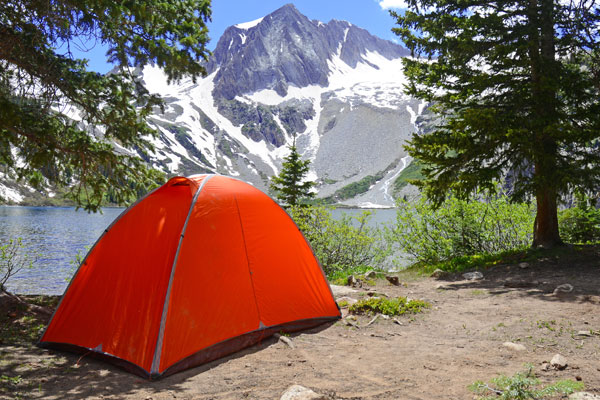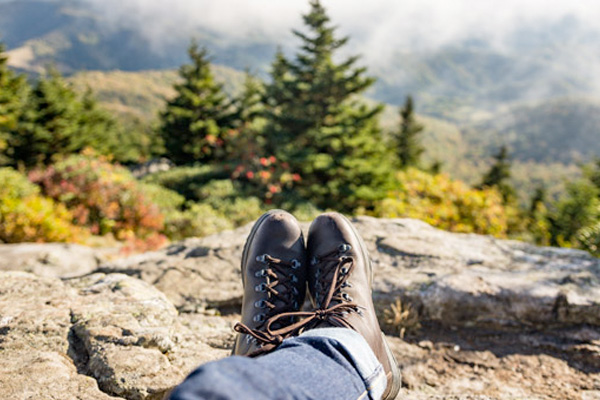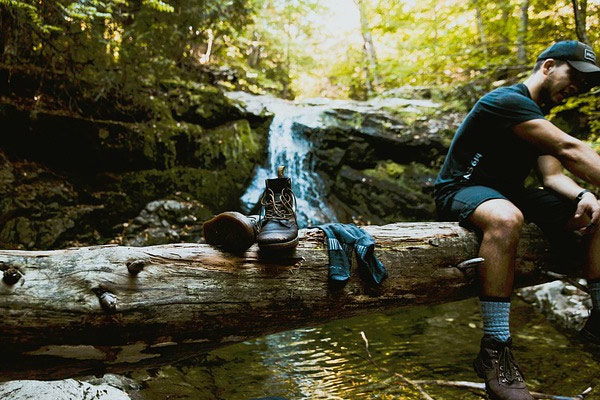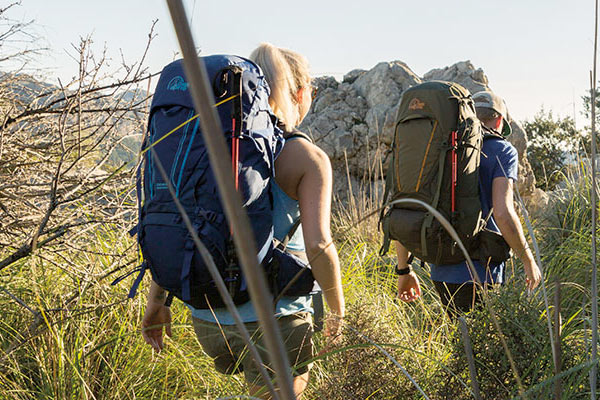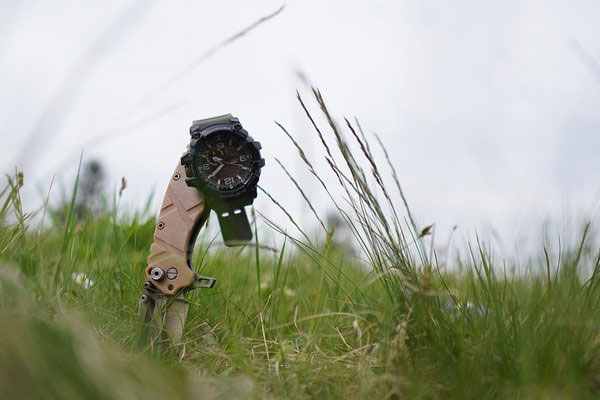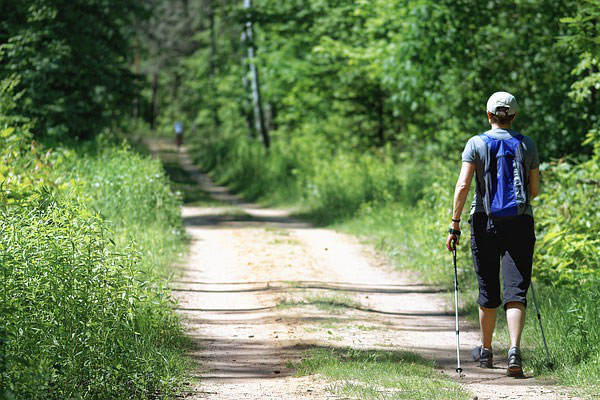Hiking Product Guide for the best Hiking kit to use in the UK
There are few nicer pastimes than hiking – the feeling of freedom, the openness and a chance to take in the full beauty of nature is a special treat that shouldn’t be taken for granted. It’s also one of the most popular activities in the UK, with 9.1 million Brits engaging in some form of regular recreational walking.
We’re a society of ramblers and hikers. Ever since the mass trespass up Kinder Scout in 1932, access to the countryside has been fought for and enjoyed by millions. In the year 2000 the ‘right to roam’ act was passed, which opened up over 1,000,000 hectares of the UK countryside and allowed people to enjoy land they had been denied access to for centuries. Since the land was opened up, ramblers and hikers all over the country haven’t looked back, with an estimated 110 million visitors to national parks every year.
Here we’re going to explore exactly why hiking is so enjoyable. We’re going to look at the physical and mental health benefits of walking and go some way to explaining why hiking remains one of the most popular activities in the UK. Once we’ve done that, we’ll give you tips and advice on equipment you should buy before you head off on a hiking adventure!
You can take a gentle stroll to a hobby, or even a holiday activity!
Hiking in the UK
We’re perfectly set up for hiking in the UK, with 140,000 miles of maintained footpaths according to Ramblers.org.uk. These footpaths cover a wide range of terrains, scenery, townscapes and the like. Whatever you like to see, whether it’s architecture, mountains, forest or water, there’s a footpath that’ll take you there!
Furthermore, there are also fifteen National Parks dotted all over the United Kingdom. The National Parks are areas of unspoiled natural beauty, perfect for hiking, camping, fishing and a wide range of outdoor pursuits. They’re accessible, walker-friendly and have information posts to guide visitors, helping you to get the most from your time visiting.
The UK National Parks are as follows…
- Dartmoor
- Exmoor
- Lake District
- New Forest
- North York Moors
- Northumberland
- Peak District
- South Downs
- The Broads
- Yorkshire Dales
- Brecon Beacons
- Pembrokeshire Coast
- Snowdonia
- Cairngorms National Park
- Loch Lomond
- The Trossachs National Park
Whether you like hills, mountains, coastal paths, moorlands or wetlands, there’s an area of the UK that you can enjoy hiking in. You’ll be treated to unspoiled views, fresh air, wildlife and wide open spaces. There’s history and many unique cultures in the different parks, so no two are the same.
You’ll also be doing your bit to help maintain the countryside, because the National Parks are well managed, and part of their protected status means that they are afforded additional care and attention.
Health benefits of Hiking
In a world where we’re encouraged to track our steps and stay active, hiking provides the perfect way of getting in some fantastic exercise. In fact, studies show that walking burns up to 75% of the calories that running does, so you’ll get most of the benefit without the discomfort! It’s worth noting as well that those figures were taken on a flat track – throw in a few hills or mountains and you’ll find out that hiking is a huge calorie burner!
There are mental health benefits to hiking too. A common and popular treatment for anxiety and various mental health conditions prescribed by mental health professionals is known as ‘green therapy’, whereby patients will spend extended periods outside in the fresh air and the countryside. The practice is known to be very helpful and effective at dealing with a lot of the common problems mental health patients suffer with.
The fantastic thing about hiking is how accessible it is for so many people. You don’t have to buy much in the way of equipment, you can start at any level and you don’t need to learn any particular skill. You can walk at any pace – as fast or as slow as you like. You can choose to walk up hills or on the flat. You can be out hiking for 10 minutes or 12 hours – it’s totally up to you. It’s an activity without restrictions, so you can suit yourself with when, where and how far you hike.
There’s no need to feel out of place when hiking, because walking is a great leveller. We can all walk, so nobody is excluded from hiking. You don’t need to reach a certain skill level or fitness level to enjoy walking.
Unlike a gym, where many people are self-conscious, hiking puts people at ease from the start. There’s no need to wear clothing that makes you feel uncomfortable and no need to perform movements or activities that you can’t manage. You simply pick a route, dress appropriately and begin your adventure!
It’s a perfect family activity
Hiking is a great way for families to explore the countryside together. It teaches children about nature and gets them to enjoy the great outdoors. It’s a way for children to exercise without realising it and an opportunity to peel them away from staring at screens!
Deciding a route can be a family activity and you can teach your children how to navigate their way along it. You can pick a route that is suitable for all the members of your family, so it’s challenging but enjoyable. If your children aren’t naturally into team sports, hiking is a way to introduce them to other forms of activity and exercise – you might even inspire a lifelong love of the outdoors if you do!
Hiking is dog friendly. If you have a pet dog, why not combine their daily walk with an adventure into the countryside? All of the National Parks are dog friendly, so enjoy hiking around them with your pets. Just a word of warning though – there may well be local rules and customs, plus guidance at certain times. An example is during lambing time, where farmers may request that you keep your dog on a lead so as to not scare or potentially injure the newborn animals.
There are few nicer ways to spend time together as a family, free from distractions, the internet, the TV, phones and everything else. Just fresh air and fun together, forming memories that will last a lifetime.
Choosing the Right Hiking gear
One of the wonderful things about hiking is the low barrier to entry. You needn’t spend a fortune on kit, but there are certainly some essentials that you should pick up before you head out on your walk.
Footwear For Hiking
Appropriate footwear is an absolutely essential item of kit for hiking. The shoes that will best suit your needs depend on the terrain you’ll be walking on. If you’re heading up mountains and hills, you’ll need a good, strong pair of walking boots that will be sturdy under foot, will provide excellent ankle support and will be both insulated and waterproof. Expect to pay £40 for an entry level pair and up to £200 for a top-end pair.
If you’re sticking to flatter, more stable terrain under foot (such as footpaths and gravel tracks) but still want to rack up some mileage, you’ll get away with walking shoes. These are more like normal trainers but have a sturdier sole, more foot support and are more waterproof than standard trainers. They’re lighter, but they lack the ankle support of a boot. These aren’t ideal on hills and mountains where the under-foot conditions may not be so uniform. Expect to pay £35-£115.
Clothing For Hiking
Your clothing requirements will depend on the location of the hiking you’re going to be doing. If you’re heading up into the mountains, you have to be prepared for what lies ahead up there. The temperature drops the further up you go, with anywhere up to a 10 degree difference between the base and the summit.
To cope with this, a strategy that involves lots of layers is a good idea – that means you can take off and put on layers of clothing as you see fit. Using layers as opposed to a single thick coat gives you more flexibility as you head through the different temperature layers. Start with a base layer, add t-shirts, a light zip up top and then a waterproof jacket, the thickness of which will be determined by the temperatures where you’re going.
Weather is also a factor when hiking up mountains and hills – even if it’s sunny at the bottom of a mountain, it could be foggy, windy and rainy at the top. The exposure at the top of the higher peaks means you’ll be subject to varying weather conditions. It’s worth taking a pair of trousers with you and waterproof layers for your top and bottoms because you never know how the weather can change.
A pair of gloves (ideally waterproof) and even a hat are a good idea, especially if you’re going to spend a lot of time in the higher hills where the temperature could be very low for a long time.
The unpredictable British weather means you may even experience all the seasons in a single day when you’re walking at a lower level, so it’s always worth being prepared for a shower, even if rain isn’t forecast! This list may sound like a lot of clothing to take with you, but they’re all items that could easily fit into a standard day backpack.
Suitable socks are important for walking – if you are going to walk any great distance you can’t get by on thin socks. Walking socks tend to be thicker, well-fitting and even have a slightly compressive feel to them that support the foot and ankle.
Hiking Accessories
When you’re out and about all day you’re going to be carrying a lot of items, so a good backpack is vital. You need to make sure it’s sufficiently big enough, has comfortable straps and is waterproof to cope with the conditions.
Alongside the clothing and bag, a first aid kit, a map and a water bottle are all good ideas to carry. It’s not that you’ll need them all, but you’d rather not find out the hard way that you haven’t got them!
Turning Hiking Into Holidays
With so many of us tied to desks and computers all day for a living, activity holidays have grown in popularity. You could turn hiking into an adventure holiday by going on a road trip to one of the National Parks and enjoy a few days exploring them on foot.
You don’t have to venture to a National Park to enjoy a walking holiday though – there are some beautiful coastal walks in the UK. The Cornish coastal path runs for 300 miles and takes you to some of the most beautiful beaches in the country. You can visit a different beach every day of your holiday and enjoy refuelling with cream teas and ice cream! Most importantly – you needn’t look at a single screen all day!
If the coast isn’t your thing and you prefer the hustle and bustle of a city, why not go on a walking tour of London, taking in the river, the history and the modern architecture? You can also jump on board with one of the walking tours that appear around the city, learning more about a particular area of the city as you go.
If none of those options sound like they’re for you, why not enjoy walking as a fitness challenge? There’s an annual walking marathon along Hadrian’s Wall, there’s a coast to coast challenge or even the Three Peaks challenge. The point is you needn’t limit your walking to a recreational, slow stroll – you can make it more challenging if you’d like to!
Hiking for Health and Enjoyment
We’re so lucky in this country to have such open access to so many beautiful walking spots. Why not take advantage of them and enjoy the great outdoors, getting some exercise, fresh air and giving your mental health a nice boost at the same time.
Once you start hiking, you’ll never want to stop – it’s the perfect blend of relaxation, exercise and escapism.
